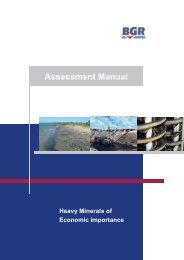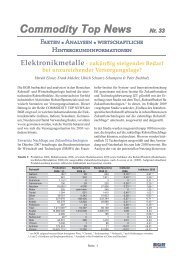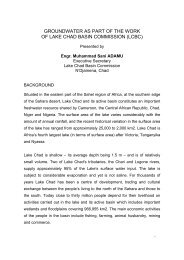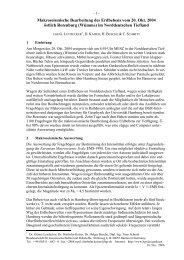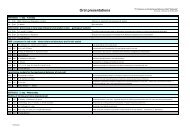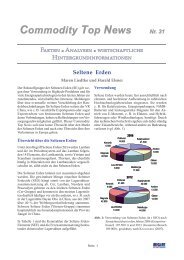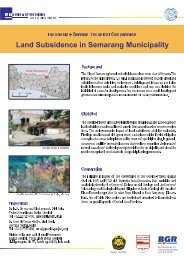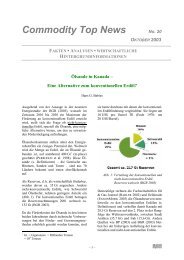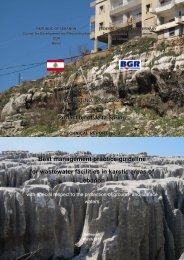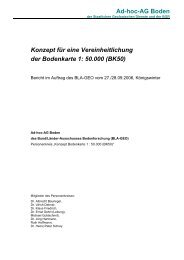THE SMOOTH SOUNDING GRAPH. A Manual for Field Work ... - BGR
THE SMOOTH SOUNDING GRAPH. A Manual for Field Work ... - BGR
THE SMOOTH SOUNDING GRAPH. A Manual for Field Work ... - BGR
Create successful ePaper yourself
Turn your PDF publications into a flip-book with our unique Google optimized e-Paper software.
5<br />
where R is the resistance [Ohm] of the wire, U is the voltage [Volt]<br />
measured between the wire-ends when a current of an intensity I [Am-<br />
pere] flows through the wire.<br />
Fig.1<br />
This means: the longer<br />
the wire, the greater the<br />
resistance, but the<br />
resistance decreases,<br />
when the cross-section is<br />
enlarged. The influence<br />
of the material of the<br />
wire (iron, copper) is<br />
expressed by a material constant ρ, i.e. the resistivity of the wire<br />
measured in [Ohm.m] or [Ωm]. This dimension can easily be proved from<br />
equation (1) in order to have equal dimensions on both sides.<br />
Now we have to change our mind from the wire to the half-space. Some<br />
difficulties arise, because the infinite half-space possesses neither a<br />
length nor a cross-section. We also do not know in which direction the<br />
current flows. Obviously this problem depends on the points of grounding<br />
the electrodes. Between which points the voltage U has to be recorded?<br />
We now shall reduce these difficulties step by step. Starting from <strong>for</strong>mula<br />
(1) valid <strong>for</strong> the wire (Fig. 1) we try to remove the length a and the cross-<br />
section q from this <strong>for</strong>mula, trans<strong>for</strong>ming it into<br />
U<br />
a<br />
=<br />
I<br />
ρ<br />
q<br />
(2)<br />
At the left side appears a voltage normalized to the unit length and ex-<br />
pressing the intensity E of the electric field. E has the dimension [Volt/m].<br />
At the right side the quotient current/cross-section expresses nothing else<br />
then the density of the current within the wire.



